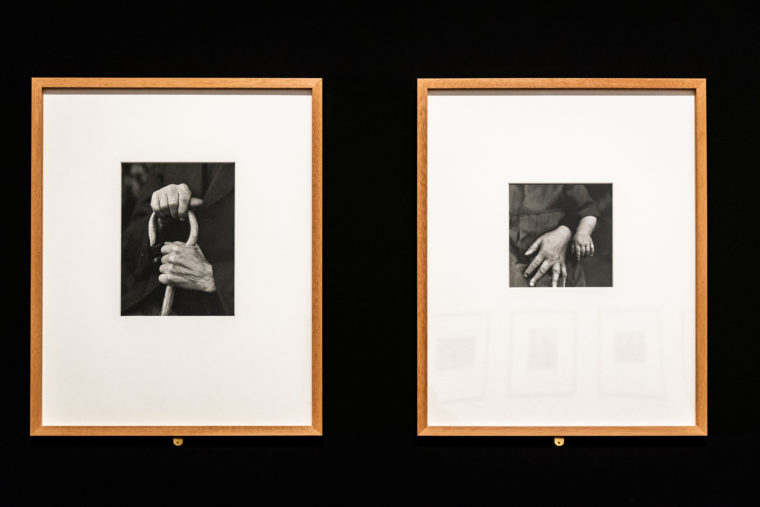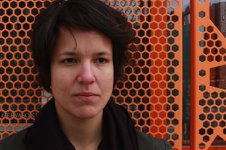Search
To search for an exact match, type the word or phrase you want in quotation marks.
A*DESK has been offering since 2002 contents about criticism and contemporary art. A*DESK has become consolidated thanks to all those who have believed in the project, all those who have followed us, debating, participating and collaborating. Many people have collaborated with A*DESK, and continue to do so. Their efforts, knowledge and belief in the project are what make it grow internationally. At A*DESK we have also generated work for over one hundred professionals in culture, from small collaborations with reviews and classes, to more prolonged and intense collaborations.
At A*DESK we believe in the need for free and universal access to culture and knowledge. We want to carry on being independent, remaining open to more ideas and opinions. If you believe in A*DESK, we need your backing to be able to continue. You can now participate in the project by supporting it. You can choose how much you want to contribute to the project.
You can decide how much you want to bring to the project.

People of the 20thCentury is the ambitious project that August Sander set out to do in 1911, and a very extensive theoretical corpus has been built to study the importance of this work for more than a century. Monographs, exhibitions and anthological texts about Sander, considered to be one of the most renowned German photographers in modern photography history, describe the importance attached to this work, regarded as a cultural and even psychological history of the 20thcentury.
This visual story is being presented at the Virreina Centre de la Imatge and displays, under the same name, 187 pieces. This exhibition outlines a composition of pictures structured by chapters, as if it followed a theme that expands (and complements) as you walk around the itinerary. The large archive that constitutes People of the 20thCentury is displayed under the umbrella title “Portfolio of Archetypes”, and here onwards it unfolds the story’s order – seven titles that show a declaration of intent about how they reflect the way of reflecting the comprehensive collection’s typologies: I) Countrymen, II) Skilled Workers, III) Women, IV) Classes and Professions, V) Artists, VI) The Big City and VII) The Last People. And although I find every section fascinating, I will focus my attention on chapters III and VI.

Photograph La Virreina Centre de la Imatge. Pep Herrero
Chapter III:Sander included photographs of women of almost every category. He kept track of them to the point of turning them into an “area of attention”, just like Susanne Lange pointed out: in the German photographer’s work, women were represented as a place of its own. In the twenties and early thirties, Sander’s portraits covered intimate relationships and the different female roles: housewife, mother, philosopher, secretary, actress, artist, wife, worker, countrywoman, intellectual… But it should be noted that these portraits do not stop at the ideal pictures of women promoted particularly by American cinematography and advertising of the time, which shaped stereotypes based on hairstyles and clothing, as well as women’s figure à la garçonne, political affiliation or studied vanity. Sander’s photography work does not reflect prevailing fashion trends or the topics of the time.
Starting from a traditional understanding of roles, Sander provides us with a vision of dissident women, far from the imposed norm. In his photographs, women do not exclusively respond to the context of their partner and their family, but instead occupy a space of freedom where there is a shining aura of an unrepeatable gesture, a look, a move… that comes from themselves but also surpasses them. Hence the greatness and relevance of this work. In this sense, the photography that constitutes this exhibition transcends the idea of time, even though it’s on the context of Germany at the beginning of last century, it condenses a halo of eternity still echoing in the present. The validity of this work lies in the way the photographer addresses the subjects on the transition from the rural to the urban world, the professionalization of trade, women as liberated individuals… And particularly in the process he found to create wide categories, neither reductionist nor typified.
Chapter VII:Sander sought for the plurality of the human universe from the typologies he found the most interesting, but he also put emphasis on a pose, a pair of hands or the detail of defining a very specific body part, just like it is encapsulated in “Studies – The Human Being”, a series barely exhibited and almost unprecedented in the museographical context. The German photographer knew how to track and materialize visually the diversity to the fullest extent. He developed a particular skill by moving away from the whole picture to make room for gestures. It is in the last hall of the exhibition where the photography comes to a halt with a flourish, a significant contribution that makes me think about the need of devoting more time to the image theory and framing a period of time that still has a lot to reveal. In Sander’s case, it is priceless because he captures the fleeting glance and retains what Walter Benjamin called “the optical unconscious”.

Photograph La Virreina Centre de la Imatge. Pep Herrero
Epilogue:On the Rambla, where the Virreina Center de la Imatge is located, a memorable chapter of the history of photography is exhibited.

An incurable onlooker, Aymara Arreaza R. uses walking around, reading, the criticism of displacement and questioning as her working tools. She is a hybrid of trades: expressing herself through writing, some of her own images, teaching as well as research projects that she backs up with the construction of more personal geographies. Since 2011 she directs www.rutadeautor.com
"A desk is a dangerous place from which to watch the world" (John Le Carré)